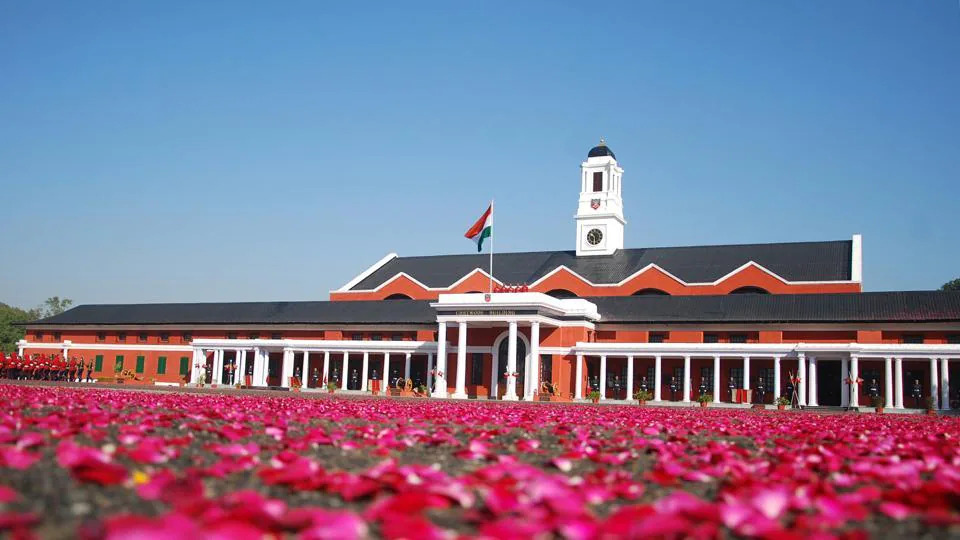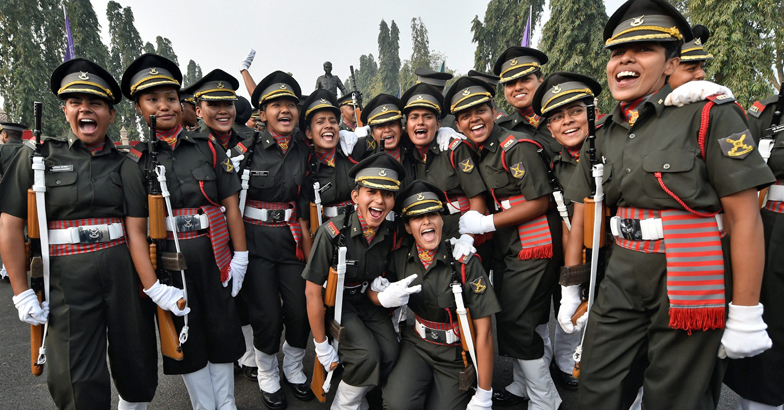Difference Between IMA & OTA | IMA vs OTA- Which is best?
IMA vs OTA : Hello Defence Aspirants! Being a defence aspirant you must have heard two very common names – Indian Military Academy (IMA) & Officers Training Academy (OTA). These two training institutes are premier institutes which train unmarried male and female candidates to induct them into Indian Army . But do you know the differences between these two training institutes . Don’t worry ! In this blog , we shall know details about Indian Military Academy (IMA) & Officers Training Academy (OTA) and we will also know the differences between IMA & OTA .
CDS – Combined Defence Services
Table of Contents
First of all, it is important for you to know about the CDS exam. CDS i.e. Combined Defense Forces exam is conducted by UPSC every year. This exam is held twice a year in the months of April and September, although these dates can also be changed by UPSC. To apply in the CDS exam, it is necessary for the candidates to qualify their graduation. Even if you are in the final year of graduation, you can apply for CDS exam.
Candidates from CDS entry apply for IMA (Indian Military Academy), INA (Indian Naval Academy), AFA (Air Force Academy), OTA (Officers Training Academy).
How to Join Indian Military Academy in 2023 – Read Here .
Now Let’s know about Indian Military Academy and Officers Training Academy separately :-

IMA – Indian Military Academy :-
IMA is a training academy for the Indian Army located in Dehradun from where only male candidates take training. Female candidates are not given training in IMA. Candidates taking training in IMA are called Gentleman Cadets. Trained cadets from IMA get permanent commission which is also known as PC. Cadets who have completed training from NDA go to IMA and complete one and a half year training. If you are in the final year of graduation or you have qualified graduation then you can apply for IMA through CDS entry. Your applying age for IMA should be between 18 years to 23 years only then you can join IMA between 19 years to 24 years.
It is compulsory to keep IMA in first preference while applying form for CDS . If you join IMA through CDS entry then you have to give English, GK and Maths all three papers in CDS exam and then qualify SSB interview. If you are an engineering student then you can join IMA from TGC i.e. Technical Graduate Course. For this, your age should be from 20 years to 27 years. TGC entry is a direct entry for which there is no written exam. If your Engineering percentage matches the TGC cutoff, then you will directly face the SSB interview.
By taking permanent commission from IMA, an officer can serve in the Indian Army for a maximum of 65 years of his age .
OTA – Officers Training Academy :-
There are two Officers Training Academy located in India. One OTA is located in Chennai and the other OTA is located in Gaya. Only TES entry candidates are given training from OTA Gaya. We will talk about OTA Chennai. Simultaneous training is imparted to male and female candidates from OTA Chennai. OTA Chennai is the only academy that female aspirants can join for Indian Army. Cadets taking training from OTA Chennai join Indian Army through Short Service Commission.
To join OTA from CDS entry, your age should be between 18 years to 24 years, only then you can join OTA between 19 years to 25 years. It is compulsory to keep OTA in first preference while applying form for OTA. If you join OTA through CDS entry then you have to give two papers English and GK in CDS exam and then qualify SSB interview. The training of cadets in OTA is of 49 weeks. By taking SSC from OTA, an officer can serve the army for 10 years and then if he wants, he can extend his service for another 4 years.
Apart from CDS entry from OTA Chennai, candidates can also join OTA through SSC-Tech, JAG (Judge Advocate General), NCC special entry. All these entries are direct entry, which means that you do not have to give any written exam, now you will directly face SSB interview.

Promotion & Salary Difference between IMA & CDS :-
Passed out cadets from both IMA and OTA are appointed at the rank of Lieutenant and the salary also remains the same and if we talk about promotion, first the officers of NDA, IMA and OTA get preference for promotion.
The most important thing is that in both IMA and OTA, the “Ragda” given to the cadets remains the same and “Ragda” is the only facility which provides as much as the cadets want.
How to join IMA in 2023 -2024 – Read Here .
Major Differences between IMA and OTA :
What Sets OTA and IMA Apart
In the realm of officer training, two notable establishments exist: Officers Training Academy (OTA) and Indian Military Academy (IMA). These institutions serve as crucibles for the transformation of individuals into officers, yet they diverge in several key aspects.
OTA: Welcoming Both Genders with a Focus on Short Service Commission
Officers Training Academy, with its locations in Chennai and Gaya, takes pride in grooming individuals of both genders for the realm of officership, specifically for the Short Service Commission (SSC). Distinguished by its commitment to diversity, OTA shapes future officers through a comprehensive curriculum.
IMA: Exclusively Nurturing Gentlemen for the Permanent Commission
Indian Military Academy, nestled in Dehradun, exclusively trains gentlemen for the esteemed Permanent Commission (PC) track. The IMA experience encompasses rigorous training, academic excellence, and the cultivation of leadership qualities.
Navigating Eligibility and Entry Requirements
Prospective candidates aiming for a career as officers must navigate the intricacies of eligibility and entry requirements for OTA and IMA.
To enter the IMA, applicants need to be between 19 to 24 years old, whereas those aspiring to join OTA must fall within the age range of 19 to 25 years.
Tailoring Examinations to Institution-Specific Trajectories
Admission Examinations: IMA vs. OTA
The path to joining the Indian Army varies depending on whether you’re eyeing the Indian Military Academy (IMA) or the Officers Training Academy (OTA).
IMA Aspirants: The Mathematics Factor
Aspirants aiming for IMA face an additional challenge in the form of a Mathematics examination. This pivotal subject plays a crucial role in the selection process for those pursuing a Permanent Commission through IMA.
OTA Candidates: Navigating Without Mathematics
Contrastingly, candidates aspiring for OTA are exempt from the Mathematics paper in the admission process. Instead, their focus remains on excelling in English and General Knowledge assessments.
Tenure and Prospects: A Glimpse into the Future
Service Tenure and Beyond
One of the differentiating factors between IMA and OTA lies in the tenure of service and the subsequent possibilities.
IMA: The Path to a 30-Year Service
Indian Military Academy presents a pathway to a longer service commitment. Aspiring officers who opt for IMA have the opportunity to dedicate up to 30 years of their lives to the service of the nation, embodying the ideals of honor and duty.
OTA: A 14-Year Journey
Officers Training Academy, on the other hand, offers a shorter tenure of service. Officers who graduate from OTA can serve for 14 years and in future they can join Permanent Commission .
The decision to pursue a career as an officer in the Indian Army hinges on a multitude of factors. Each candidate’s aspirations, inclinations, and strengths play a pivotal role in selecting between the Officers Training Academy (OTA) and the Indian Military Academy (IMA).
Whether one seeks the dynamic challenges of the Short Service Commission via OTA or the enduring commitment of the Permanent Commission through IMA, the Indian Army stands as a bastion of honor and valor, ready to embrace new generations of dedicated officers.
This is all about IMA vs OTA .In the IMA vs. OTA debate, there’s no definitive answer—it all boils down to your individual aspirations and inclinations. Whether you choose the comprehensive training and Permanent Commission of IMA or the focused training and Short Service Commission of OTA, your decision will mark the beginning of an honorable journey of service to your nation.








